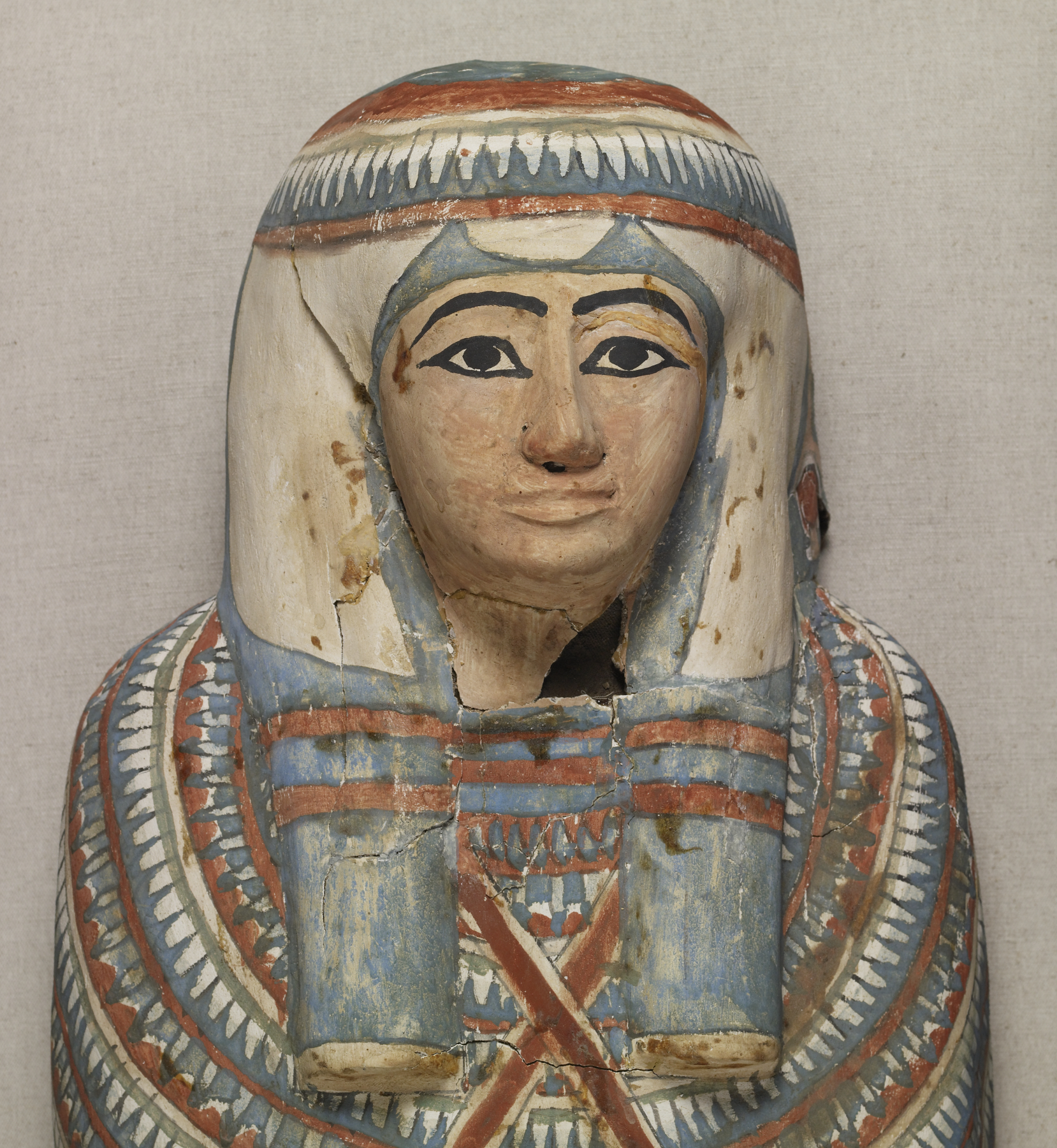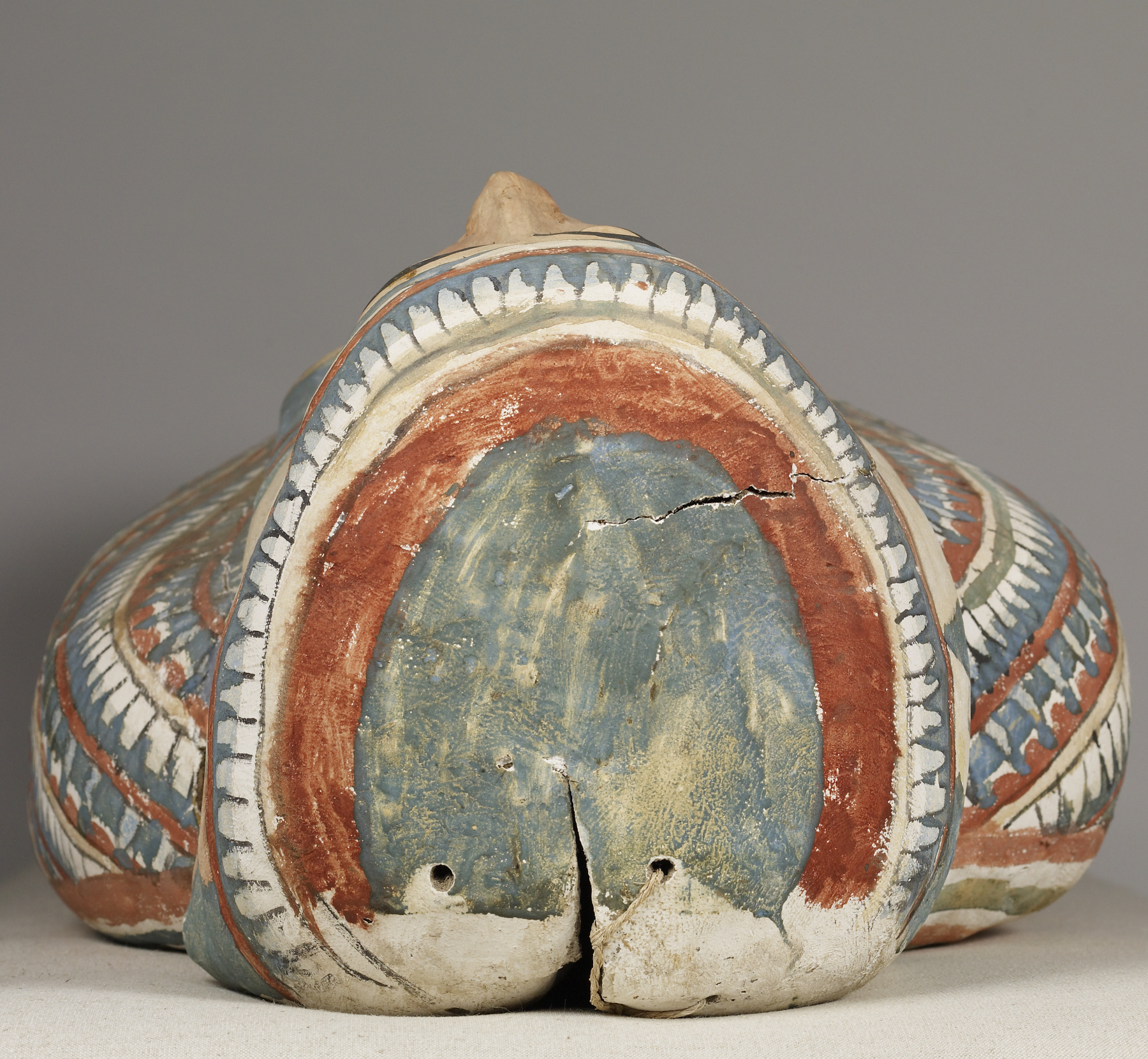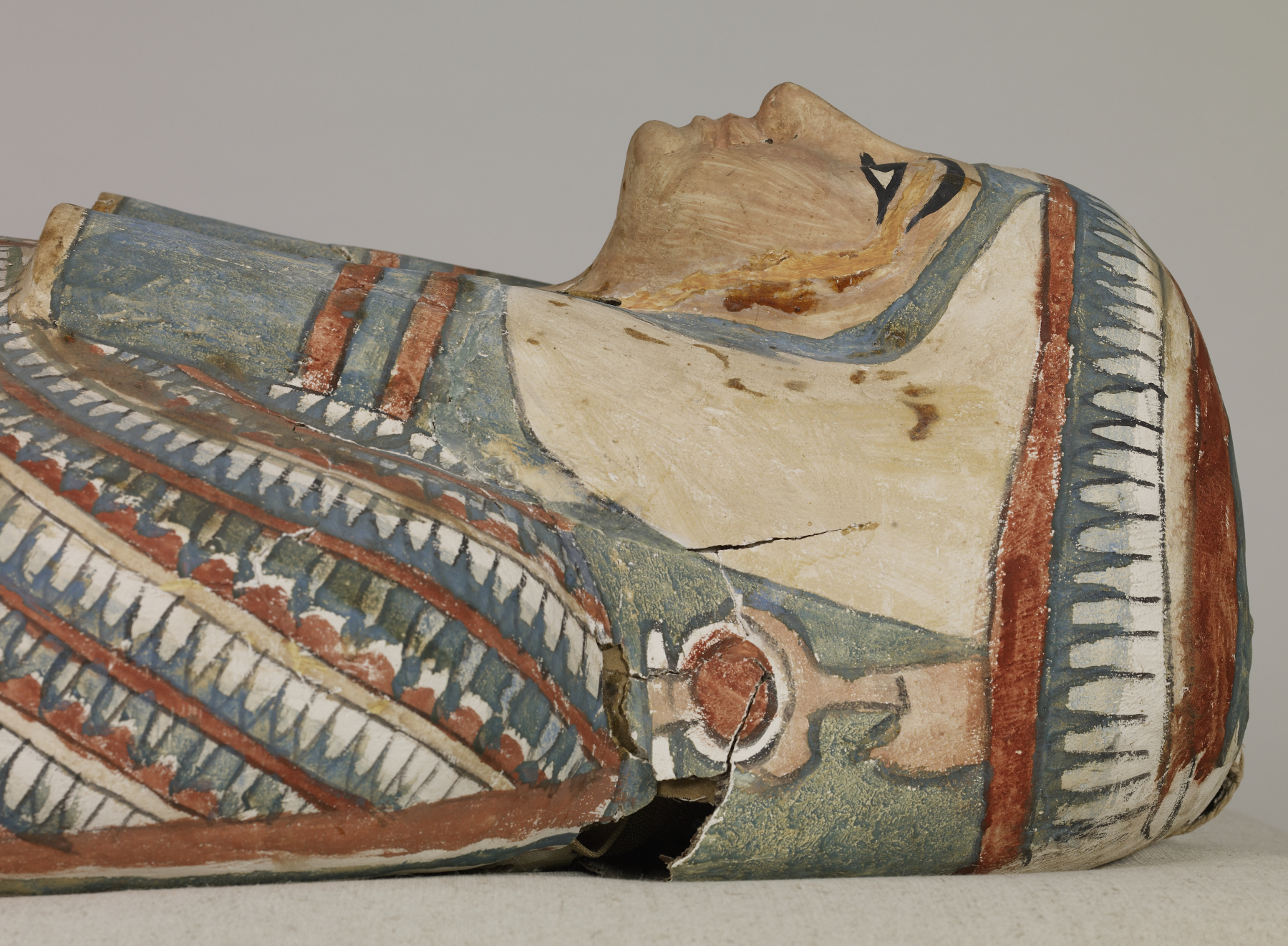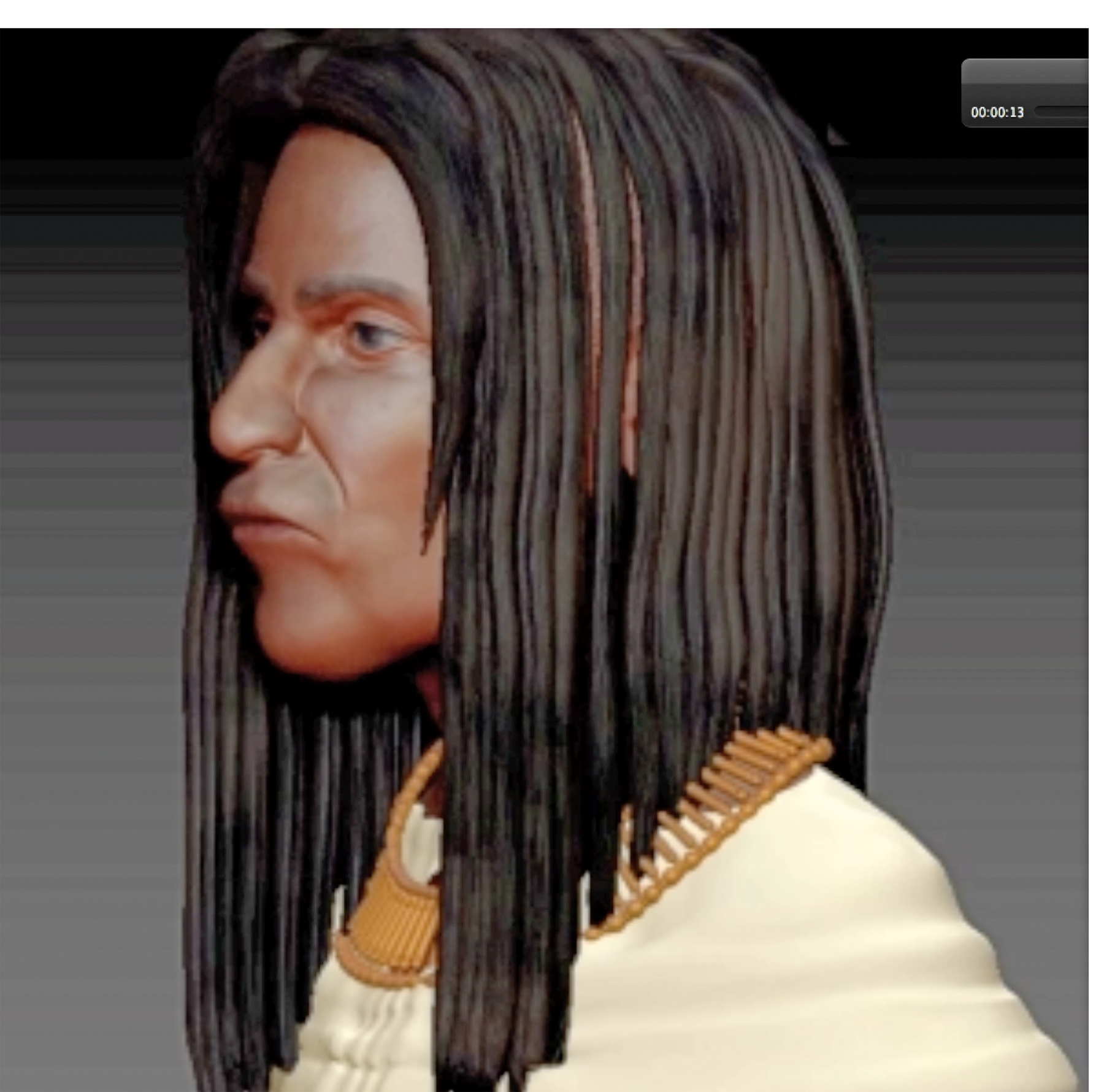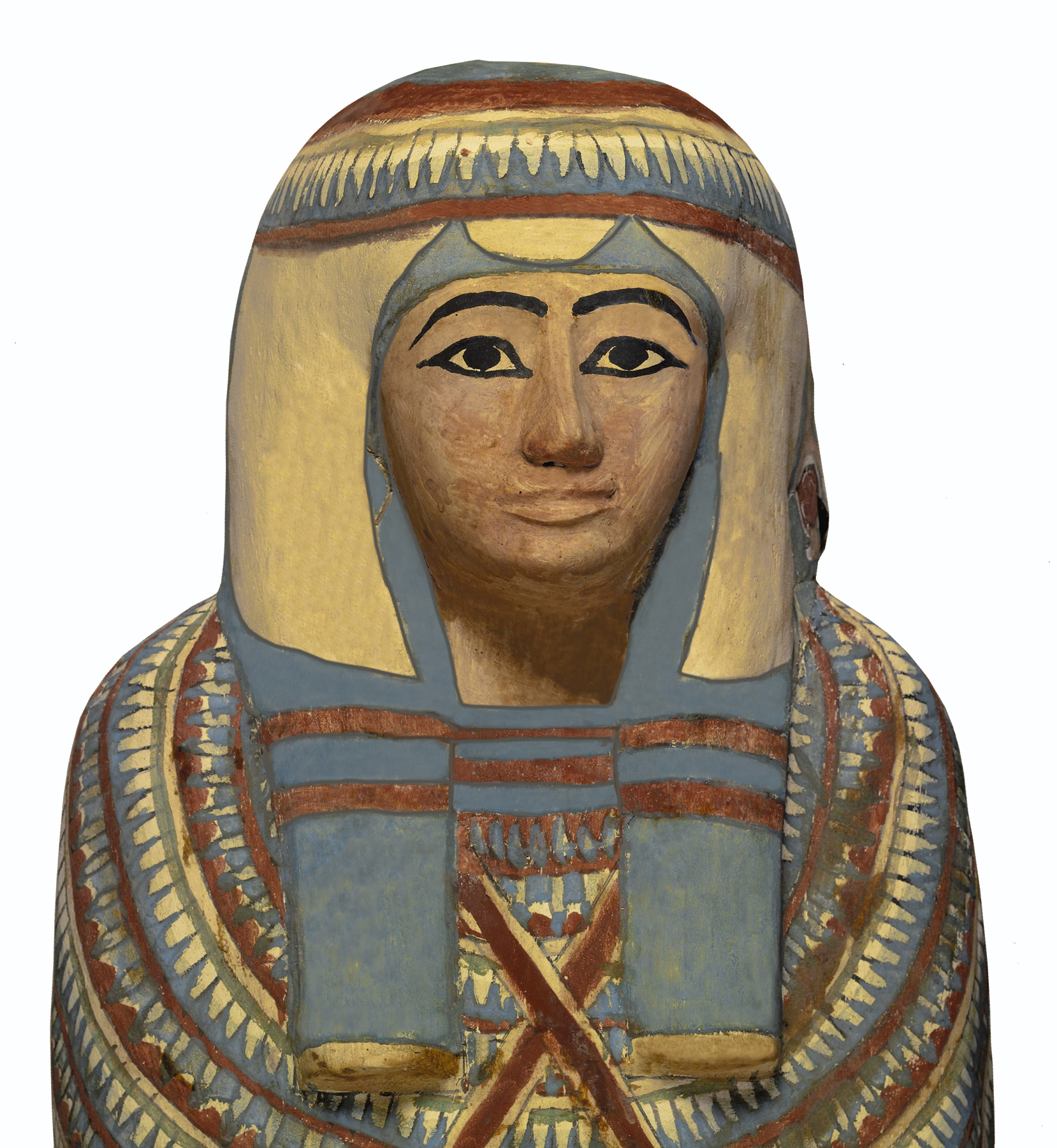Painted Cartonnage
(Ancient Egypt and Nubia )
Mummification preserved mortal remains in order to house the Ka, or life force of the individual, as it needed to return to the body to find sustenance. The human-shaped covering, called "cartonnage," is composed of layers of linen and plaster. Its painted decoration includes the floral wreath on the wig, a broad collar, and a winged scarab beetle. Five additional registers of decoration show the protective four sons of Horus, the sacred boat of the funerary-deity Sokar, a mummy of Osiris on a funerary bed, a divine falcon god, and a short hieroglyphic text with an offering formula.
See the additional media for a facial reconstruction of the mummy, courtesy of Michael Brassell, as well as a color reconstruction of the cartonnage.
Inscription
Provenance
Provenance (from the French provenir, 'to come from/forth') is the chronology of the ownership, custody, or location of a historical object. Learn more about provenance at the Walters.
[Excavated at Deir el-Bahri by the Metropolitan Museum of Art's Egyptian Expedition, Winter of 1930-1931, by Ambrose Lansing]; Metropolitan Museum of Art, New York, ca. 1930-1931; Walters Art Museum, 1941, by exchange.
Geographies
Egypt, Western Thebes, Temple of Hatshepsut (Deir el-Bahri)
(Place of Origin)
Egypt (Kid-Friendly)
Credit Line
Museum acquisition by exchange with the Metropolitan Museum of Art, 1941
Location in Museum
Accession Number
In libraries, galleries, museums, and archives, an accession number is a unique identifier assigned to each object in the collection.
In libraries, galleries, museums, and archives, an accession number is a unique identifier assigned to each object in the collection.
79.1B
Do you have additional information?
Related Objects



